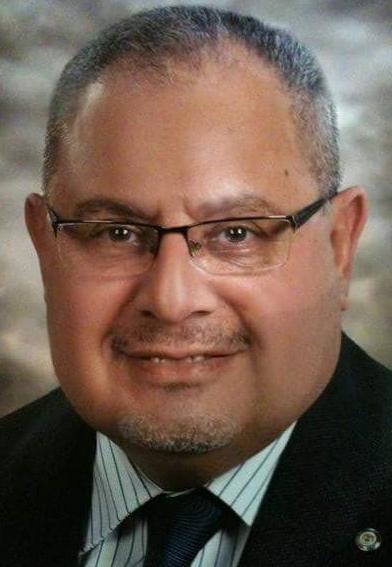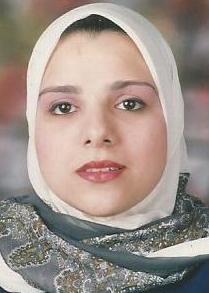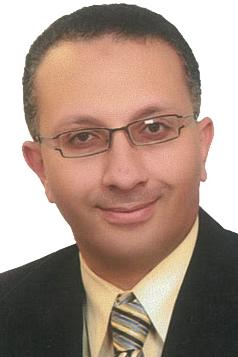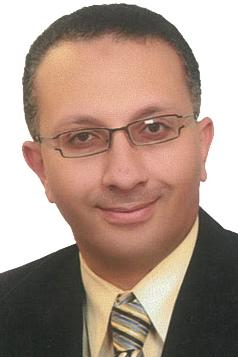
|
Safety procedures for dental laser (None ionizing) Radiation
|
|
|
Prof. Dr. Mohamed M Nassar
|
|
|
Former Vice President Of Tanta University For Environmental And Community Affairs
|
|
|
fadelbhotty@icloud.com
|
|
|
The term of laser is acronym derived from Light Amplification by Stimulated Emission of Radiation. The effect of laser radiation is essentially the same as light generated by more conventional ultraviolet, infrared and visible light sources. The unique biological implication attributed to laser radiation is generally those resulting from high intensities of laser light. Laser devices, instruments and machines vary in their potential for light energy emission from low-powered hand-held or integrated devices, to high-powered units capable of cutting and ablating tissue and materials.
The safe use of lasers in dentistry extends to all personnel who might be exposed, either deliberately or by accident, and demands of the lead clinician an approach to their use in order that risk of accidental exposure to laser light is minimised. The scope for regulations extends in similar ways to those imposed on the use of ionising radiation in the dental practice. Laser safety measures in the dental surgery are often drawn from the safe approach to the use of lasers in general and other specialties in medicine and surgery.
The fundamental objective of this lecture is to give some keynotes regarding the possibility of hazardous exposure for dentists to these radiation particularly unaware personnel and to provide reasonable adequate guide lines for safe use of laser machines with different wave lengths, such as aiming beam orgon, diode, cr: ysgg and Er: yag and co2 in their dental practices.
|
|

|
Histological and ultrastructural study of the effect of potassium dichromate with evaluation of potential protective role of vitamin C on submandibular salivary gland of rats
|
|
|
Amel Mohammed Ezzat Abd-Elhamid*; Elsayed Mohamed Deraz* and Ahmed Nabil Fahmi**
|
|
|
*Faculty of Dentistry, Tanta University. ** Faculty of Dentistry , Benisuf University.
|
|
|
amal.mostafa@dent.tanta.edu.eg
|
|
|
Potassium dichromate is a heavy metal found in rocks, plants and animals that commonly used in paints, stainless steel manufacturing and food additives. Contamination of water with dichromate results in serious damage in body. Vitamin C is a potent hydrophilic antioxidant able to scavenge a variety of free radicals and oxidative molecules. The aim of this study is to evaluate the effect of Potassium dichromate on submandibular salivary glands (SMGs) of rats with evaluation of the protective role of vitamin C. The present work carried on healthy 30 adult male albino rats which were randomly divided into three groups. Group (I) act as control group, group (II) which received potassium dichromate and group (III) which received the same dose of potassium dichromate but with vitamin C. At the end of the experiment, the rats were scarified and the submandibular salivary glands were collected. The specimens then underwent light and electron microscopical study. Ultrastructure study of specimens of potassium dichromate group showed degenerative changes represented by cytoplasmic accumulation of lipid droplets that substitute SMG structure togather with wide perinuclear membrane, distended rough endoplasmic reticulum cisternae (RER). While Vitamin C-treated glands showed mild ultrastructural changes almost normal RER, mitochondria, nuclei, perinuclear membrane and secretory granules. So, we can conclude that the exposure to chromium caused damaging effects on salivary glands and these damaging effects may be decreased by using vitamin C as a protective agent.
|
|

|
Elemental ion release from fixed restorative materials into patient saliva
|
|
|
W. ELSHAHAWY, R AJLOUNI, W. JAMES, H. ABDELLATIF, I. WATANABE
|
|
|
*Department of Fixed Prosthodontics, Faculty of Dentistry, Tanta University, Tanta, Egypt, †Department of General Dentistry, Baylor College of Dentistry, Texas A&M Health Science Center, Dallas, TX, ‡Department of Chemistry, College of Science, Texas A&M University, College Station, TX, §Department of Public Health Sciences, Baylor College of Dentistry, Texas A&M Health Science Center, Dallas, TX, USA and ¶Department of Dental and Biomedical Materials Science, Nagasaki University Graduate School of Biomedical Science, Nagasaki, Japan
|
|
|
dr_waleedelshahawy@yahoo.com
|
|
|
Abstract: The objective of this study was to quantitatively investigate the elemental ion release from the fixed gold alloy and ceramic crowns into patient saliva. Twenty patients who participated in the study were divided into two equal groups; 1) full coverage type IV gold crowns, and 2) full coverage CAD-CAM fabricated ceramic crowns. Saliva collection and clinical evaluation of marginal integrity and gingival health were performed before crowns preparation, three months and six months after crowns placement. Clinical evaluations were conducted using California Dental Association criteria. Collected saliva samples were analyzed for element release using inductively coupled plasma mass spectrometer. The zinc, copper, palladium, gold and silver were released from type IV gold crowns into saliva, while the silicon and aluminum were released from ceramic crowns. A clinically significant number of subjects had increased release of zinc from baseline to three-month recall, and increased silicon release from baseline to both three-month and six-month recalls. For all elements, the subjects’ counts for the case of three-month recall to six-month recall were never higher than that of the case of baseline to three-month recall except for palladium. No obvious adverse effects on marginal integrity nor gingival health were noticed. Significant increased releases of zinc from cast gold crowns and silicon from CAD-CAM fabricated ceramic crowns into the saliva were evident after three months of clinical service.
|
|

|
Cytotoxic effects of elements released clinically from gold and CAD-CAM fabricated ceramic crowns
|
|
|
Waleed Elshahawy, Hussien Yehia, Wedad Etman, Ikuya Watanabe, Phillip Kramer
|
|
|
a Department of Fixed Prosthodontics, Tanta Faculty of Dentistry, Tanta University, Tanta, Egypt b Department of Restorative Dentistry, Tanta Faculty of Dentistry, Tanta University, Tanta, Egypt c Department of Dental and Biomedical Materials Science, Nagasaki University Graduate School of Biomedical Science, Nagasaki, Japan d Department of Biomedical Sciences, Baylor College of Dentistry, Texas A&M Health Science Center, Dallas, TX 75246, USA
|
|
|
dr_waleedelshahawy@yahoo.com
|
|
|
Objectives: The aim of this study was to investigate the cytotoxic effects of elements released from gold and computer aided design - computer aided manufacturing (CAD-CAM) ceramic crowns.
Materials and Methods: According to the determination of elements released clinically from gold alloy and CAD-CAM fabricated ceramic crowns into saliva of fixed prosthodontic patients by using inductively coupled plasma mass spectroscopy, similar amounts of elements (Au, Pd, Ag, Zn, Cu, Al, Si) were prepared as salt solutions. A well without any tested element was used as a negative control. These salt solutions were tested for cytotoxicity by culturing mouse L-929 fibroblasts for a 7-day period of incubation. Then, the percentage of viable cells for each element was measured using trypan blue exclusion assay. The data (n=5) were statistically analyzed by ANOVA/Tukey test (p<0.05).
Results: The lowest percentage of viable cells (Mean ± SD) was evident with Zn and Cu released from gold crowns indicating that they are the most toxic elements. Ag was found to be intermediate in cytotoxic effect. Au, Pd, Al, Si were found to be the least cytotoxic elements.
Conclusion: Zn and Cu released from gold alloy full crowns showed evidence of prominent cytotoxic effect on fibroblasts cell cultures.
|
|

|
Effect of ozone therapy on the secretory part of the submandibular salivary glands of experimentally induced diabetic male albino rats
|
|
|
Sarah Yasser
|
|
|
Oral Biology Department, Faculty of Dentistry, Tanta University, Egypt
|
|
|
Sarah_a_82@hotmail.com
|
|
|
The submandibular salivary gland (SMG) is one of the major salivary glands. Although its main function is salivary secretion exocrinally, rat SMG has granular convoluted tubules (GCT) that constitutively secrete many peptides endocrinally. It was found that diabetes mellitus (DM) adversely affects SMG seromucous acini and GCT. The exact destructive mechanism of DM is not fully understood, it is thought to be related to oxidative stresses accumulation. Among the different treatment modalities for DM, ozone is claimed to be a hypoglycemic agent that could reduce oxidative stresses accumulation. Thus, we hypothesized that ozone could alleviate the diabetic burden of secretory part of SMG and pancreas. Forty male albino rats were assigned into 5 groups; control, diabetic, ozone, insulin and ozone-insulin combination. Diabetes was induced by single intraperitoneal injection of 150 mg/kg alloxan. Quantitative measurements including blood glucose level and serum insulin levels were monitored during and at the end of the experimental period, respectively. At the end of the experimental study, rats were killed and both the SMG and pancreas were excised and prepared for light and transmission electron microscope examination. We found that ozone and combination therapy depicted almost recovered SMGs acini. Also, the GCTs depicted high mitochondrial profile together with various sizes electron dense secretory granules signifying high cellular activity. The pancreatic islet revealed remarkable improvement in its structure. The quantitative results confirmed our histological findings that ozone and ozone-insulin combination therapies resulted in better alleviation of diabetic burden on rat SMGs and pancreas than traditional insulin treatment.
|
|

|
Environmental Hazard of Prosthodontic Devices and Materials
|
|
|
Fadel Elsaid abdelfattah, Safa’a El-‐Sayed Asal
|
|
|
Department of Prosthodontics, Faculty of Dentistry, Tanta University, Egypt
|
|
|
std2mster@gmail.com
|
|
|
Prosthodontics is a dental discipline that deals with oral health such as replacement of missing teeth and associated structures. The tenacity of this study was to establish the hazard of prosthodontics devices and materials on the environment. The study also established the precautions and tests used to diagnose the prosthodontic problems. Additionally, prosthodontic hazard’s detection and management was determined. The study was grounded in a review of secondary data. It was established that there are several prosthodontic devices and materials affect the environment. Precautions should be taken to prevent contamination of body fluids from a patient to the dental specialist. Diagnosing prosthodontic hazard requires a high level of integrity complying with the international classification of diseases. The management of prosthodontic hazard should include the factors that disturb dental structure. The study did not establish the biological side effects of prosthodontics materials used in dentistry and, therefore, the need for further reliable research.
|
|
|